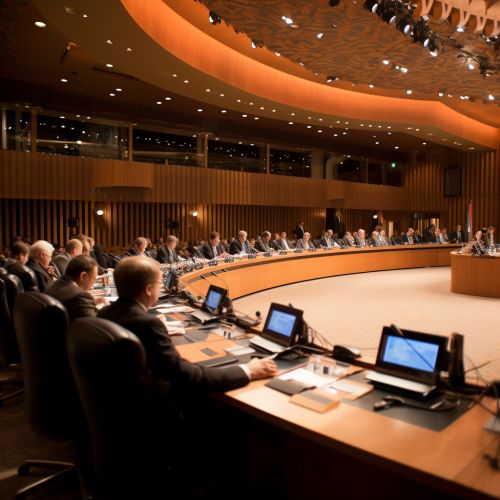Collective Security
Introduction
Collective security can be defined as a security arrangement, political, regional, or global, in which each state in the system accepts that the security of one is the concern of all, and agrees to join in a collective response to threats to, and breaches of, the peace. Collective security is more ambitious than systems of alliance security or deterrence that aim to maintain the status quo through the balance of power or through either a status quo power or a "satisfied" great power functioning as a hegemon.
Historical Background
The concept of collective security is not new and can be traced back to the Concert of Europe, an arrangement agreed upon by the European powers in the 19th century. However, the term "collective security" is most often associated with the system set up by the League of Nations after World War I and later by the United Nations after World War II. The idea was that if all nations collectively opposed any nation that invaded another, the invader would be forced to retreat. This concept was based on the principle that an attack on one is an attack on all.
Principles of Collective Security
Collective security operates by the process of binding all states in a region or globally to the commitment of mutual defence against any aggressor or violation of peace. The principles of collective security include:
- All members of the international system are to be included.
- The arrangement is to be all against one; if any state resorts to war, all other states are to join in its suppression.
- The commitment to mutual defence is to be binding and certain.
- The decision to invoke collective security arrangements against a particular state is to be made collectively, i.e., by some form of majority or consensus, not by any one state.
Collective Security vs. Collective Defense
While the terms collective security and collective defense are often used interchangeably, they are distinct concepts. Collective defense refers to the actions taken by members of a specific alliance against non-members. It is a regional or contractual arrangement. For example, NATO is a collective defense organization. On the other hand, collective security is a global mechanism for preventing aggression and requires universal acceptance. It is based on the principle that an attack on one is an attack on all.
Collective Security Organizations
There are several organizations worldwide that operate on the principle of collective security. These include:
- The United Nations (UN)
- The League of Arab States
- The Organization of American States (OAS)
- The African Union (AU)
Challenges to Collective Security
Despite its noble intentions, collective security has faced several challenges. These include:
- The difficulty in defining aggression: Different states may have different interpretations of what constitutes aggression.
- The problem of collective action: It is often difficult to get all states to agree on a course of action.
- The issue of power imbalance: The collective security system assumes that all states are equal, but this is not the case in reality.
- The risk of escalating conflict: Collective security can potentially escalate a local conflict into a global one.
Conclusion
Collective security is a complex and ambitious concept. While it has its challenges, it also offers a potential solution to the problem of international aggression and conflict. By binding all states to the commitment of mutual defense, collective security aims to maintain international peace and security.


